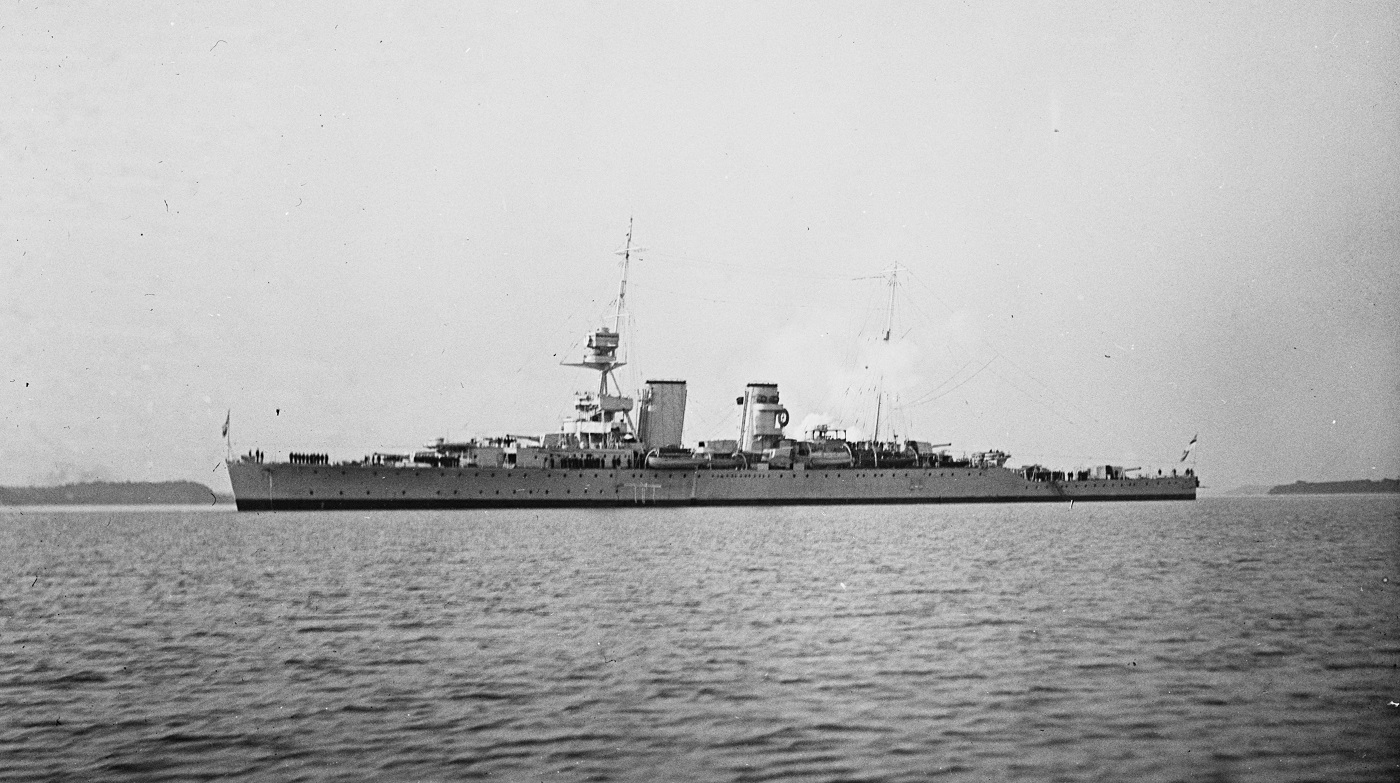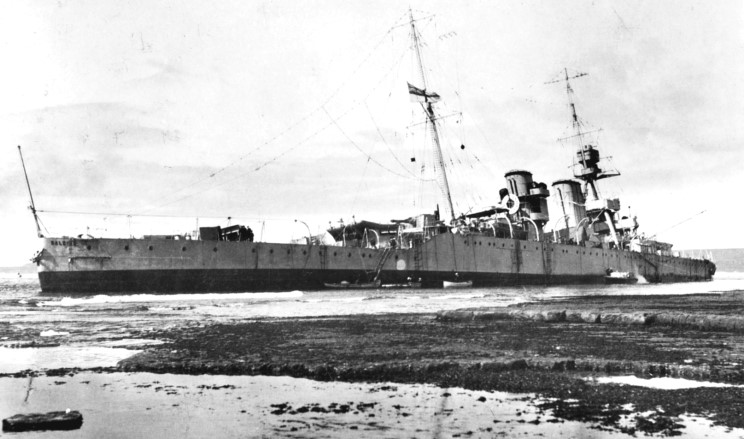Warship Wednesday, Dec. 15, 2021: Sir Walter
Here at LSOZI, we take off every Wednesday for a look at the old steam/diesel navies of the 1833-1954 period and will profile a different ship each week. These ships have a life, a tale all their own, which sometimes takes them to the strangest places. – Christopher Eger
Warship Wednesday, Dec. 15, 2021: Sir Walter
Here we see, some 100 years ago this month, the fine early Royal Navy heavy cruiser and “commerce raider hunter” of the Hawkins class, HMS Raleigh, visiting Vancouver, British Columbia. As a scholar of naval history– or else, why would you ever be on this page– you’d think you would have heard and seen much more of this beautiful warship before this post. Well, there is a good reason for that as Raleigh would have a short career indeed.
The five cruisers of the Hawkins class were large for any era, pushing over 12,500 tons (full) on a 605-foot long hull with a 65-foot beam, giving them a slender 1:9.3 length-to-beam ratio. Generating 60,000 shp on four geared steam turbines fed by 10 coal-fired/oil-boosted boilers, they were rated for 30 knots, still a respectable speed these days. Their armor scheme was light, running just 3-inches at its thickest, while their armament was fairly impressive, made up of seven BL 7.5-inch Mk VI singles and a battery of torpedo tubes along with secondary and supporting guns.
Intended for anti-merchant cruiser and trade protection roles, they were ordered in 1915, at a time when the Royal Navy was still smarting after chasing down wily German vessels like the light cruisers SMS Emden and SMS Königsberg and commerce-raiding converted freighters such as SMS Möwe and SMS Meteor. The light armor, fast speed, and long legs of the Hawkins class made sense against such a foe. After all, they were a good eight knots faster than the comparatively-sized armored cruisers SMS Scharnhorst and Gneisenau— the most heavily armed ships the Royal Navy fought in the Great War outside of European waters– which had a much better armor scheme than Hawkins and slightly heavier guns (21 cm SK L/40s) albeit with a shorter range (10.1 mi at +30° for the German guns vs 12 mi on the British guns at the same elevation).
While four of the five were completed just after the end of the Great War, in a period where German surface raiders were extinct, the class was still an influencer on future cruiser design.
As noted by Richard Worth in his Fleets of World War II:
The construction of these ships had far-reaching repercussions. They were the direct cause of Britain’s endorsing the 10,000-ton, 8-inch treaty cruiser, a new type of warship that ultimately proved something of a failure. The Hawkins provided the basis for the “County” classes and thus gave the British a head start in the development of the heavy cruiser.
The ships of the class are sometimes called the “Elizabethans” as they were named for famed English naval commanders, courtiers, privateers, and explorers of that period (Sir John Hawkins, Sir William Cavendish, Lord Howard of Effingham, Sir Martin Frobisher, and Sir Walter Raleigh) whose names were often better remembered in the New World than the old. Speaking of which, the first warship named after Raleigh, the first to attempt the establishment of an English settlement in North America, was actually American: a 131-foot 32-gun fifth-rate that was one of the original 13 fighting ships authorized by the Continental Congress on 13 December 1775.
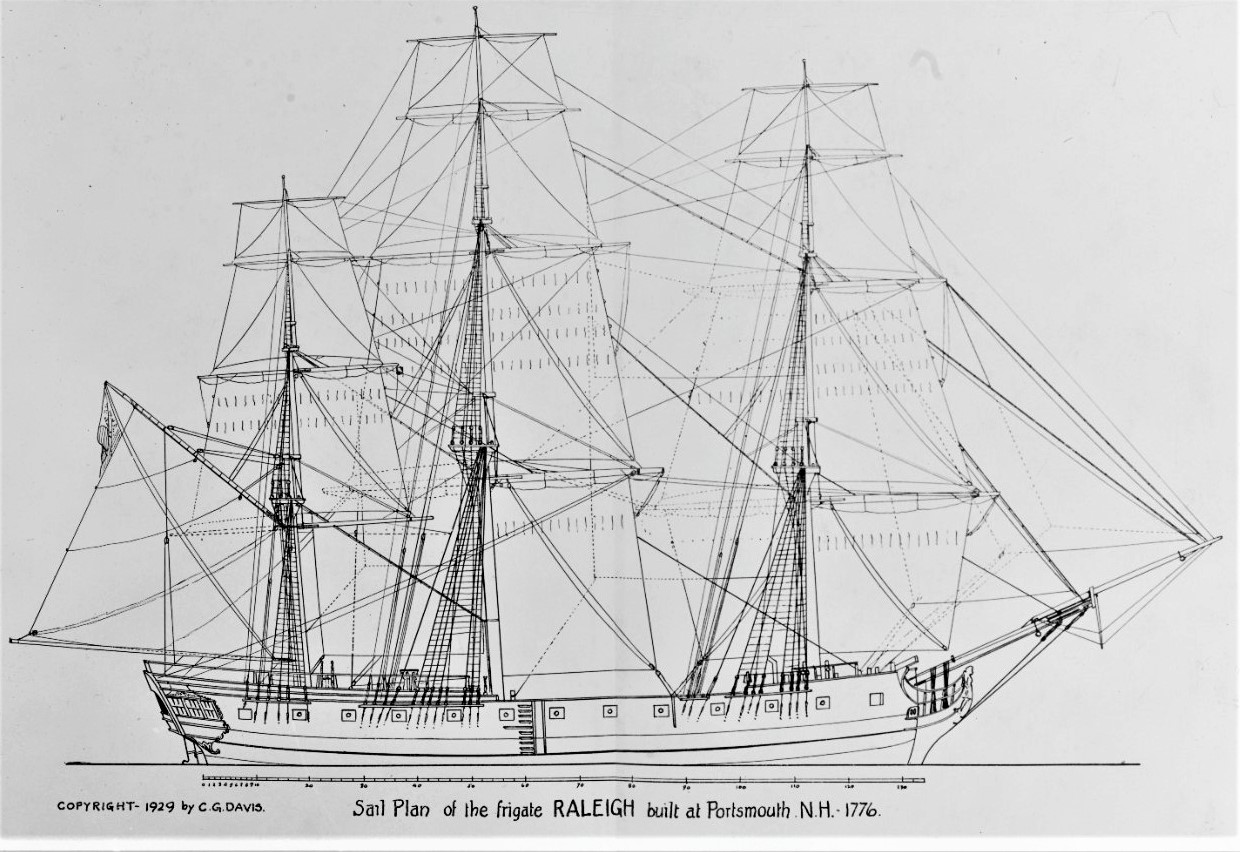
Sail Plan of the Frigate Raleigh built at Portsmouth, New Hampshire, in 1776. Copyright 1929 by C.G. Davis. Copied from drawing in book “Ships of the Past.” NH 2020
Commanded during the Revolutionary War by the famed John Barry, an Irishman who was No. 7 on the first list of captains begun by Congress, Raleigh was engaged in a nine-hour running fight with three Royal Navy ships in 1778 and, abandoned by her crew after she was run ashore, was refloated by the British and commissioned as HMS Raleigh, serving up the curious twist of being the first ship with that name in the Royal Navy. Of further curiosity, the colonial frigate endures on the flag and seal of the state of New Hampshire.
The second HMS Raleigh was an 18-gun Cruizer-class brig-sloop active from 1806 to 1839 while the third was a 50-gun fourth-rate that had her short career ended in 1857 when she was reefed.

The new 50-gun fourth-rate HMS Raleigh, circa 1850 off Portsmouth, by artist Robert Strickland Thomas (1787–1853). The old hulk of Britannia is visible inside the harbor. Photo credit: National Maritime Museum, Greenwich, London http://www.artuk.org/artworks/hms-raleigh-175747

The fourth HMS Raliegh was never completed while the fifth, a “sheathed” iron-hulled screw frigate with a hermaphrodite sailing rig and gave lots of detached colonial service in the last quarter of the 19th century. Here, her figurehead with Sir Walter depicted, via the collection of the RMG.
This leaves our HMS Raleigh as the sixth such vessel in the Royal Navy.
Meet the cruiser Raleigh
Laid down in Scotland at William Beardmore & Company, Dalmuir on 4 October 1916, as the flower of Britain’s youth was drowning in the Somme, HMSRaleigh‘s construction was slow-rolled, only launching in 1919 and commissioned in July 1921.
Built to a modified design, Raleigh carried 12 boilers rather than 10 and Brown-Curtis turbines rather than the Parsons installed on Hawkins, boosting her shp from 60K to 70K, making her capable of clocking 31 knots.
The spanking new cruiser was soon designated the flagship of VADM Sir William Christopher Pakenham, head of North America and West Indies Station. Commander of the 2nd Battlecruiser Squadron at Jutland, ironically his great-great-uncle was Edward Pakenham, the highest-ranking British officer ever killed in military service in North America, felled at the Battle of New Orleans.
With that, HMS Raleigh was off to her first duty station, making extensive visits throughout the Americas in late 1921 through most of 1922. Her first landfall in the Americas was on 11 August 1921, in Bermuda.
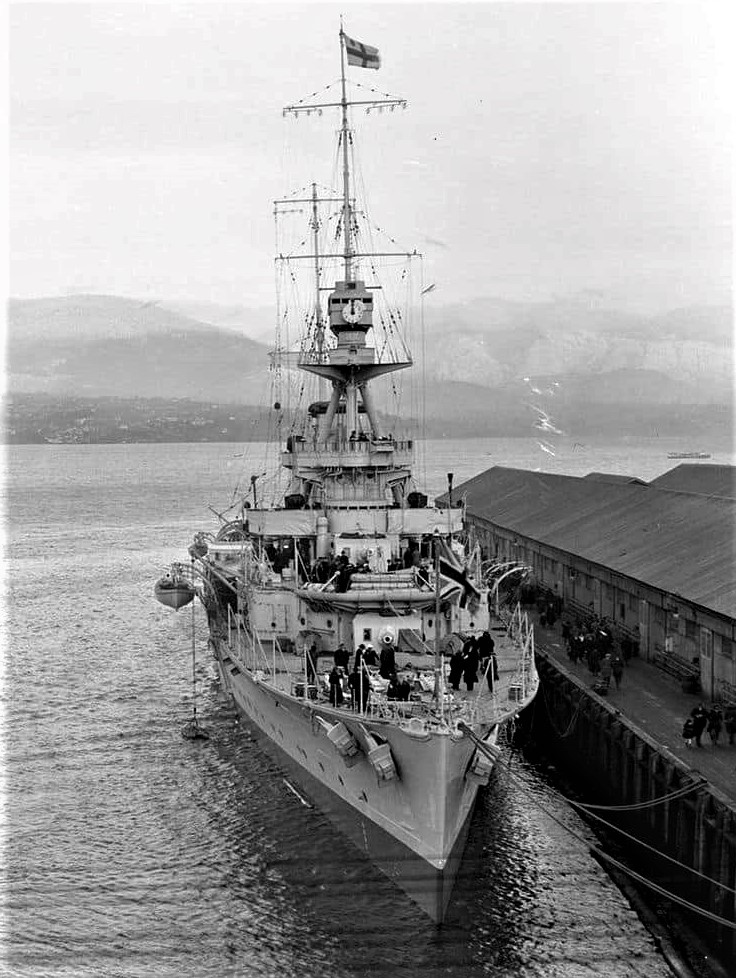
December 1921, at Vancouver. According to her logs, she was at the Canadian port from 27 December 1921- 9 January 1922. City of Vancouver Archives, Photo Credit W.J. Moore

Operation of Panama Canal HMS Raleigh in Upper West Chamber, Gatun Locks Feb 18, 1922. “In both number of ships and amount of tolls collected,” a record was set in the Canal by Raleigh that day, with the cruiser and 18 merchant vessels clearing with tolls of $79,808.50 paid. Panama Canal Company photo via the National Archives. National Archives Identifier: 100996554

Raleigh at the Washington Navy Yard, Note the detail on her 7.5-inch turrets, Carley floats, and her gunnery clock on the mast. Harris & Ewing, photographer, taken 29 May 1922. According to her log, she hosted the British Ambassador, Lord Geddes, and President Harding during her visit to D.C. Of interest, Geddes was a primary negotiator of the Washington Navy Limits Treaty that was signed that year. LOC LC-DIG-hec-31715
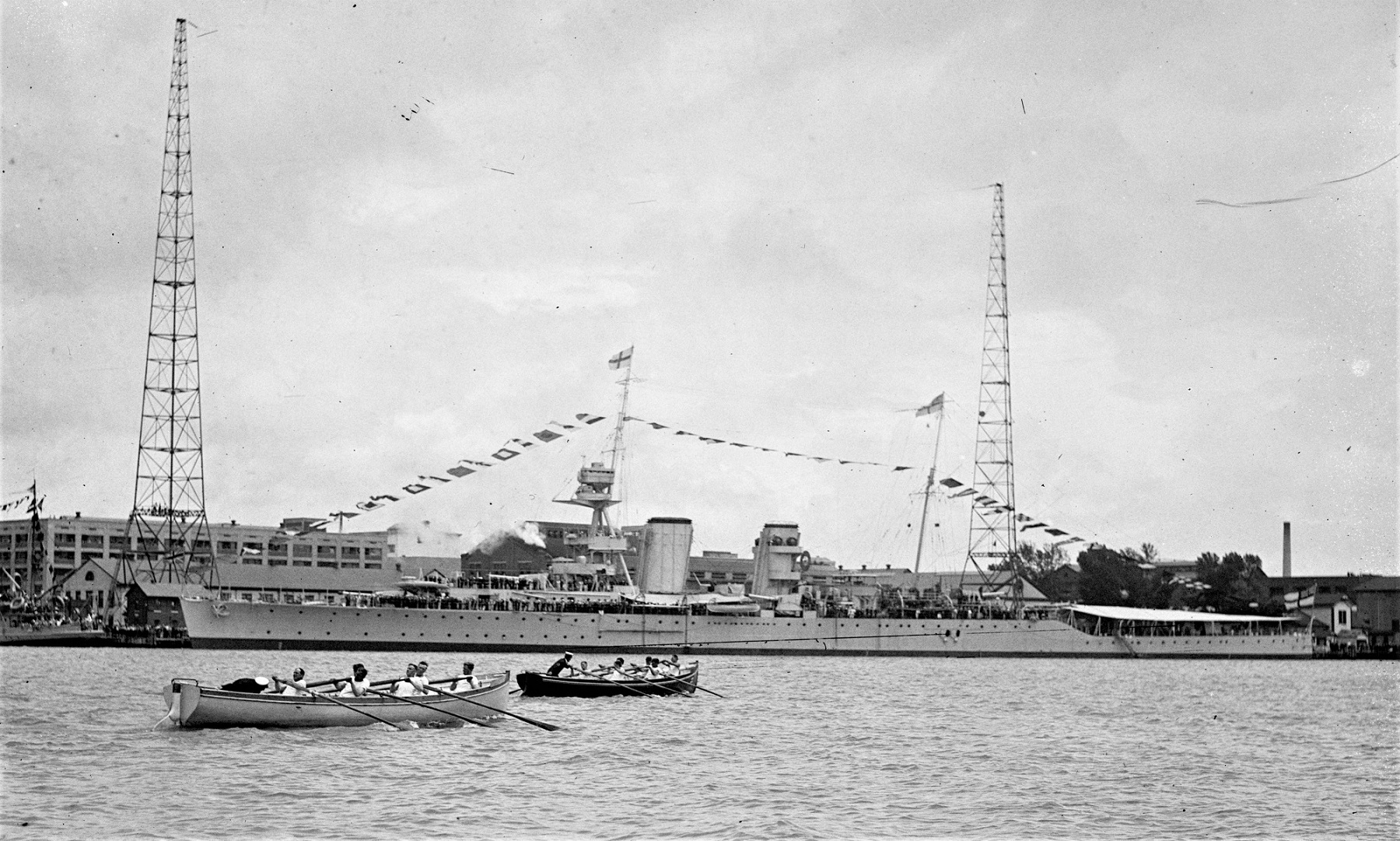
Rowing crew of the battleship USS Delaware racing a crew from HMS Raleigh, Washington Navy Yard, 3 June 1922. Via LOC.
On 8 August 1922, Raleigh, in heavy fog, ran aground at L’Anse Amour, Newfoundland, with the high winds pushing her into the rocks and eventually tearing a 260-foot gash in her hull.
3.24pm: Altered course 360º. Ran into fog. Commenced sounding
3.37pm: Land ahead & on Port bow. Reduced to eight knots
3.38pm: Sighted breakers on Starboard bow. Full speed astern. Hard a-starboard. Sounded Collision Stations
3.39pm: Grounded
3.40pm: Stopped engines. Ship bumping heavily
3.41pm: Hard a port. Ship’s stern swinging to Eastward. Full astern starboard
3.43pm: Stop Starboard Full ahead Port. Engines as requisite to prevent stern swinging on rocks
3.49pm: Finally stopped engines. Position 262º – 4.8 cables from Amour Point Light. Heading 292º. Hard aground on starboard bilge and bumping heavily
4.07pm: Let go Port anchor. Cutter & crew washed ashore on rocks
4.15pm: Two lines ashore by Coston gun. Commenced abandoning ship by lines & Carley Floats
8.00pm: Ship abandoned
Sadly, during the evacuation of her crew to shore, 11 Tars perished in the cold water.
BASHFORD, Herbert, Stoker 1c, SS 123275
EFFARD, Edward P, Stoker Petty Officer, 303078
FIELD, Silas, Stoker 1c, K 59500
FISHER, George, Stoker 1c, SS 120369
LLOYD, John E, Stoker Petty Officer, 306551
PETTET, Pat, Able Seaman, J 42323
SOWDEN, William J, Leading Stoker, K 20564
THORNHILL, George M, Stoker 1c, SS 122759
TRIPP, Sydney G, Leading Stoker, K 14053
TYLER, Reuben, Leading Stoker, K 18030
WEAVER, James, Able Seaman, 213937
WHITTON, William R, Able Seaman, J 34371
Her career had lasted just 13 months and she never fired a shot in anger.

Wreck of H.M.S. Raleigh, Forteau, Labrador. Donald Baxter MacMillan collection via the Peary-MacMillan Arctic Museum Accession Number: 3000.3.274

H.M.S. Raleigh on Rocks, Forteau, Labrador. Donald Baxter MacMillan collection via the Peary-MacMillan Arctic Museum Accession Number: 3000.33.2652
Epilogue
Embarrassed by the still very recognizable hulk of a brand new cruiser hard aground on the rocks with a hull too shattered to refloat, the Royal Navy was ordered to salvage what they could from Raleigh and break apart the vessel with depth charges in September 1922.
After helping wreck their once-proud ship, the crew of HMS Raleigh arrived at Liverpool on the liner SS Montrose.
As for her skipper and navigator, their career was over. Via The Dreadnought Project:
On 3 October Commander Arthur Bromley left Quebec for Britain on the liner Empress of France. Commander Leslie C Bott, O.B.E., his second-in-command, was tried by Court-martial on 26 October and severely reprimanded and dismissed H.M.S. Victory. Bromley was tried on the following day by a Court presided over by Rear-Admiral Hugh F. P. Sinclair, charged with negligently or by default stranding and losing his ship. In his defense Bromley argued that had the charts he had been supplied with been accurate then his ship would not have stranded. The Court found the charge proved, and he was severely reprimanded and dismissed his ship. He was placed on the Retired List, at his own request, dated 7 November.
Aboard Raleigh as a midshipman cadet on that fateful day off Newfoundland and Labrador was the future VADM Sir Stephen Hope Carlill, who went on to command a series of destroyers during WWII and serve as the last British Chief of Naval Staff of the Indian Navy. In 1982, an extensive diary entry from the wreck was published in the Naval Review (Vol 70, pgs. 165-173) which makes interesting reading.
Much of the vessel remains and the Royal Canadian Navy’s Fleet Diving Unit (Atlantic) has conducted extensive recovery operations on the wreck over the past two decades to recover live UXO from her bones although there is still as much as 80 tons of unstable explosives aboard.
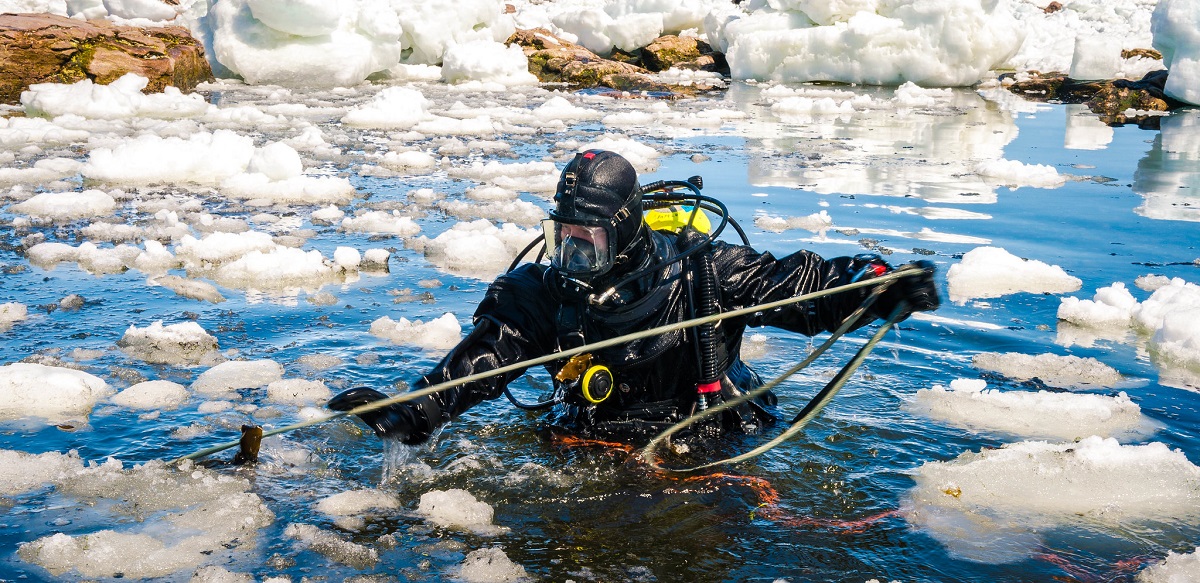
Fleet Diving Unit (Atlantic) Port Inspection diver LS Dan Babich enters the water to place C4 explosives on unexploded ammunition at L’Anse-Amour on 25 May 2017 during Operation RALEIGH to remove unexploded ordnance in the area of the shipwreck of HMS RALEIGH that ran aground and sank in 1922. Photo: Master Seaman Peter Reed, Formation Imaging Services Halifax
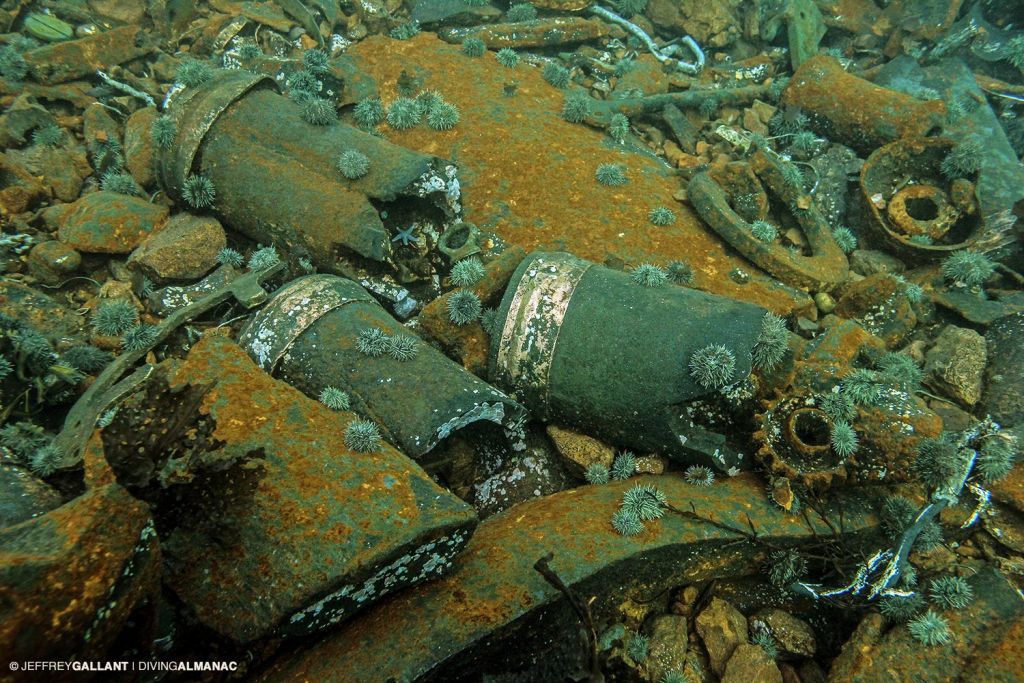
Shells destroyed in place by RCN clearance divers. Photo by Jeffery Gallant, RCN, via the Diving Almanac.
As for Raleigh‘s sisterships, only one, Cavendish, was completed during the Great War, albeit as one of the Royal Navy’s first aircraft carriers, HMS Vindictive.

Ex-Cavendish as circa 1918 carrier HMS Vindictive, capable of carrying about a dozen light aircraft. Reconverted back into a cruiser after the war, she was demilitarized per the terms of the London Naval Treaty and converted to a training ship in 1936. She spent WWII as a repair ship and was paid off in 1945. IWM SP 669

Jane’s 1946 entry for the class, with Hawkins and Frobisher being the last ones standing. The entry was the final one for the class as well as the last entry under “British Cruisers” in the 1946 edition.
The other three ships of the class, Hawkins (D86), Frobisher (D81/C81), and Effingham (D98) had uneventful interwar service and, like Vindictive, landed their guns in the mid-1930s. They then were rearmed and clocked in for WWII with Effingham wrecked in May 1940 during the Norway campaign. Hawkins, along with Frobisher, won battle honors at Normandy. Both were disposed of soon after VE Day.
Interestingly, just 44 BL 7.5-inch Mk VI naval guns were manufactured– exclusively for the Hawkins class– and, as they were landed in the 1930s and few remounted, at least 17 were recycled into coast defense batteries during WWII. As noted by Tony DiGiulain at Navweaps:
Three were at South Shields between July 1941 to August 1943, seven went to the Dutch West Indies, three to Canada, and five to Mozambique. However, two of the guns intended for Mozambique were lost in transit in 1943. These were replaced by transferring two guns from South Shields.
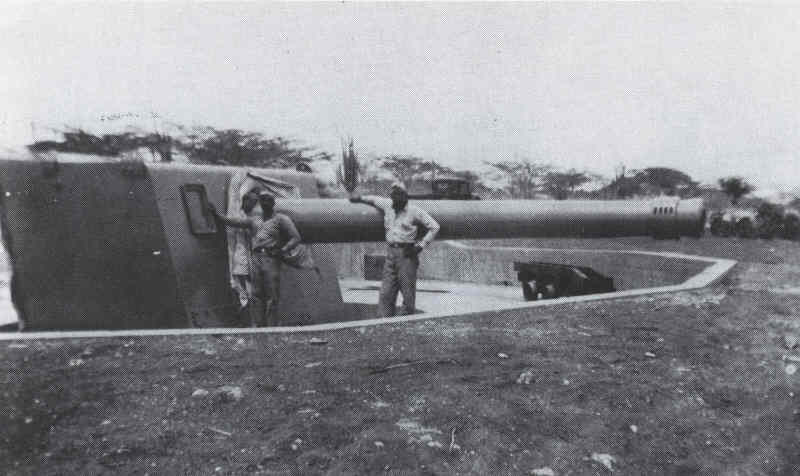
Dutch 7.5s in their distinctive turrets. Via Lago Colony As Raleigh’s guns were recovered from the stricken cruiser, some of these could have come from her.
Rather than name a seventh ship to continue the name in the Royal Navy, the Admiralty bestowed the moniker HMS Raleigh to a shore establishment on the River Lynher at Torpoint on 9 January 1940. Authorized under the Military Training Act of 1938, during WWII some 300 new enlistees arrived at the base each week for 11 weeks of training and the base in 1944 became a major D-Day embarkation center for U.S. forces headed to Utah and Omaha beaches.
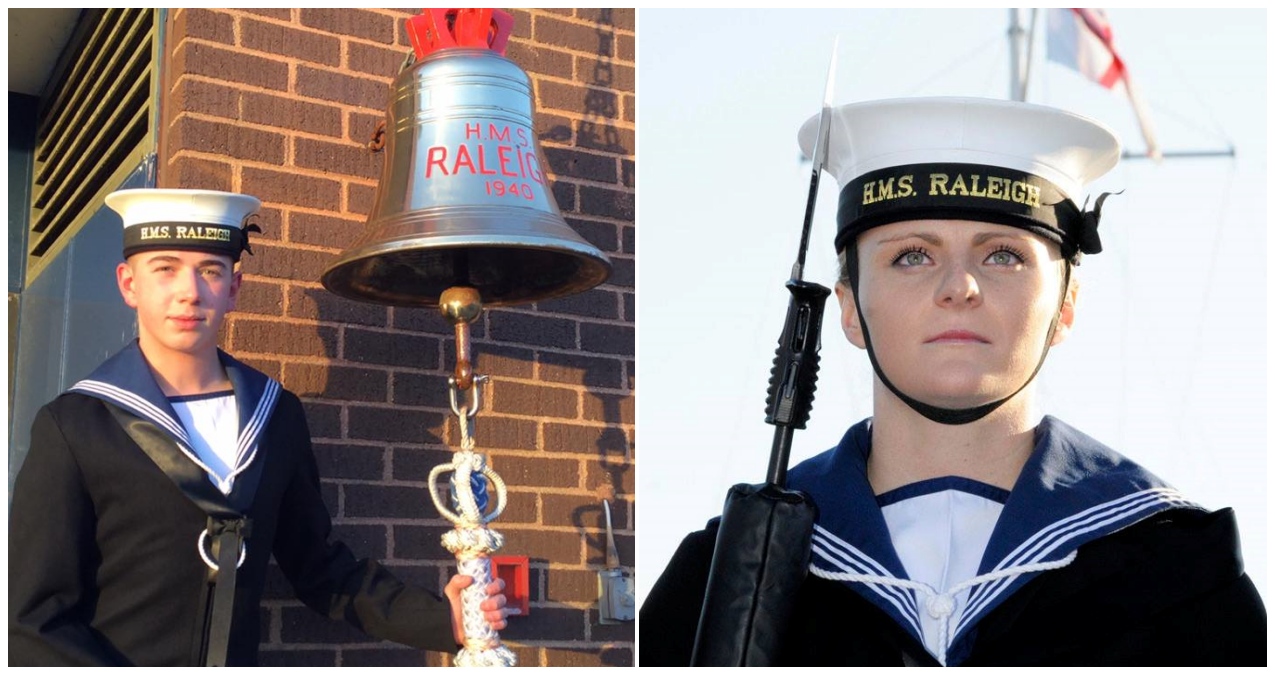
The site became a new entry training establishment for all types of Ratings in 1959 and continues its role to this day as the home of the Royal Navy School of Seamanship with an average of 2,200 personnel on-site on any given day.
Displacement:
9,750 long tons (9,910 t) (standard)
12,190 long tons (12,390 t) (deep load)
Length: 605 ft (o/a)
Beam: 65 ft
Draught: 19 ft 3 in (deep load)
Installed power
12 × Yarrow boilers 70,000 shp, 4 × Brown-Curtis geared steam turbines, 4 shafts
Speed: 31 knots
Range 5,640 nmi at 10 knots with 1480 tons oil and 860 tons of coal
Complement: 690 (712 counting flag staff)
Armor
Belt: 1.5–3 in
Deck: 1–1.5 in
Gun shields: 1 in
Armament
7 × single 190/45 BL Mk VI
4 × single 76/45 20cwt QF Mk I AA guns
2 × single 2-pdr 40/39 QF Mk II AA guns
6 × 21-inch torpedo tubes on the beam
If you liked this column, please consider joining the International Naval Research Organization (INRO), Publishers of Warship International
They are possibly one of the best sources of naval study, images, and fellowship you can find. http://www.warship.org/membership.htm
The International Naval Research Organization is a non-profit corporation dedicated to the encouragement of the study of naval vessels and their histories, principally in the era of iron and steel warships (about 1860 to date). Its purpose is to provide information and a means of contact for those interested in warships.
With more than 50 years of scholarship, Warship International, the written tome of the INRO has published hundreds of articles, most of which are unique in their sweep and subject.
PRINT still has its place. If you LOVE warships you should belong.
I’m a member, so should you be!



